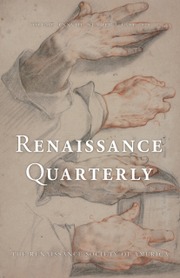Wolfthal’s Household Servants and Slaves promises a transnational visual history of private servants and slaves from 1300 to 1700 in aristocratic and religious painting, Dutch Golden Age painting, and European-fashioned images of Asian and African descendants. Chapter 1 presents manuscript images of servants and slaves: smaller than their masters, in backgrounds or margins, deferentially kneeling, trailing behind their masters, their backs bent. This was the “dominant aristocratic” mode. Most enslaved people were depicted as foils to their owner’s honor, so chapter 2 interprets slaves portrayed without masters as granting unusual autonomy and dignity. Chapter 3 considers master-servant emotional entanglements. Gillis van Tilborgh’s Tichborne Dole (ca. 1670s), with servants dispassionately arrayed around their lord, represents “dominant” servant-master imagery, while Franz Hals’s smiling nurse and infant charge in Catharina Hooft and Her Nurse (1620) deviates from this by portraying a moment of authentic feeling (118). Testamentary bequests from masters to servants indexed master-servant “connection” while physical branding signaled “alienation.”
Chapter 4 considers images of servants and the enslaved in print. Such images reprised attitudes found in painting, but added elements of nation-building, race, and colonialism. Wolfthal proposes no meaningful patterns: servant and slaves appeared alternately “immoral,” “bestial,” “invisible,” and “ideal,” and while Dutch maids might signal piety in Dutch engravings, female domestics of color were more likely to appear “lustful” or sexually available (137, 170). Chapter 5 considers material culture forms featuring servants in effigy. Paintings of “erased” servants and slaves, life-sized dummy boards of servant figures, and sculpted table supports depicting enslaved Black Africans all heightened servile visibility, with “blackamoor” furniture also reflecting England’s role in the dehumanizing transatlantic slave trade (204, 207). In her conclusion, Wolfthal declares gender, race, and class to converge in servant-slave images and that themes established in these early modern images endure into the present.
The monograph is clearly organized and written in careful, unhurried prose. Generously citing other art historians, Wolfthal proffers various useful observations of servant life, outlining specialized tasks, masterly prerogatives, and commonplace abuses. Here and there she analyzes artist attitudes, and (at times puzzlingly) ascribes Beale’s equanimity toward his Black subjects to his Puritan background. A secondary theme is “immaterial qualities” conveyed by images of servants and slaves. Thus, some images imputed loyalty and obedience; others, indolence and dishonor.
Wolfthal insists that no single trajectory can compass the variegated history of servitude or its images, though she hints at helpful heuristics. As bound servitude shifted to wage labor, images progressively depicted workers as more autonomous, and as images approached the modern era, artists rendered enslaved people with greater attention to their subjects’ humanity. And while most enslaved people portrayed in the fifteenth century were white boys, by the seventeenth century the category included Africans, Native Americans, and Asians, as well as women and girls.
Wolfthal includes several fascinating non-Western sources in her analysis, such as Felipe Guaman Poma de Alaya’s 1615 El primer nueva coronica y buen gobierno, which blended Spanish and native Andean elements, and a Dutch portrait pair of two nameless Sub-Saharan African youths who probably hailed from Kongo-Angola. Yet the book’s global focus feels forced and uneven—as if originally dedicated to Dutch and English works, the author was urged to widen her focus and slot in people of color.
Declaring service a “shifting unstable category,” Wolfthal disavows the possibility of discerning coherent historical patterns: her main finding is that images of servants and slaves “effaced” their subjects, rendering them invisible (216). While a visual history, the monograph is at its best when offering textual evidence, such as the early modern opinion that servants, unable to govern themselves, required paternalistic guidance. Household Servants will be of use to art historians wishing to locate images of early modern subalterns, though social historians will not likely encounter new insights. Though Wolfthal concedes that race, gender, and class structured life and labor in early modern domestic households, for scholars who regularly engage critically with the emotional realities and violent asymmetries that lay at the heart of early modern task division, the author’s persistent attention to the formal, exterior qualities of slave-servant images can register as a stance of thin concern; one in which skewed labor hierarchies are, at base, passively and politely accepted.



